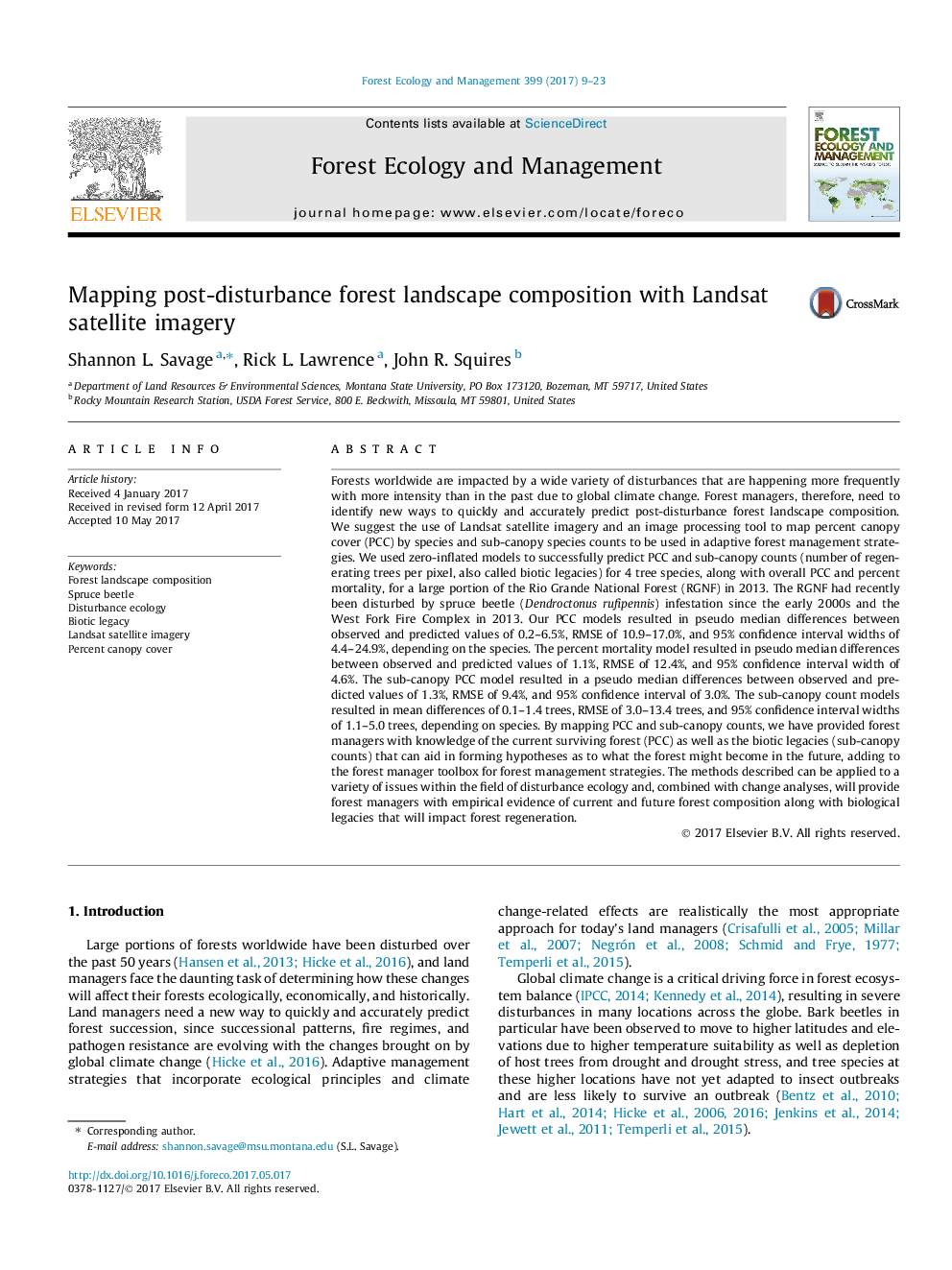| کد مقاله | کد نشریه | سال انتشار | مقاله انگلیسی | نسخه تمام متن |
|---|---|---|---|---|
| 4759363 | 1421359 | 2017 | 15 صفحه PDF | دانلود رایگان |
عنوان انگلیسی مقاله ISI
Mapping post-disturbance forest landscape composition with Landsat satellite imagery
ترجمه فارسی عنوان
نقشه برداری ترکیب منظره جنگل پس از اختلال با تصاویر ماهواره ای لستت
دانلود مقاله + سفارش ترجمه
دانلود مقاله ISI انگلیسی
رایگان برای ایرانیان
کلمات کلیدی
ترکیب منظره جنگل، سوسک یاس زیست محیط زیست، میراث زیستی، تصاویر ماهواره لندست، پوشش کاناپه٪
موضوعات مرتبط
علوم زیستی و بیوفناوری
علوم کشاورزی و بیولوژیک
بوم شناسی، تکامل، رفتار و سامانه شناسی
چکیده انگلیسی
Forests worldwide are impacted by a wide variety of disturbances that are happening more frequently with more intensity than in the past due to global climate change. Forest managers, therefore, need to identify new ways to quickly and accurately predict post-disturbance forest landscape composition. We suggest the use of Landsat satellite imagery and an image processing tool to map percent canopy cover (PCC) by species and sub-canopy species counts to be used in adaptive forest management strategies. We used zero-inflated models to successfully predict PCC and sub-canopy counts (number of regenerating trees per pixel, also called biotic legacies) for 4 tree species, along with overall PCC and percent mortality, for a large portion of the Rio Grande National Forest (RGNF) in 2013. The RGNF had recently been disturbed by spruce beetle (Dendroctonus rufipennis) infestation since the early 2000s and the West Fork Fire Complex in 2013. Our PCC models resulted in pseudo median differences between observed and predicted values of 0.2-6.5%, RMSE of 10.9-17.0%, and 95% confidence interval widths of 4.4-24.9%, depending on the species. The percent mortality model resulted in pseudo median differences between observed and predicted values of 1.1%, RMSE of 12.4%, and 95% confidence interval width of 4.6%. The sub-canopy PCC model resulted in a pseudo median differences between observed and predicted values of 1.3%, RMSE of 9.4%, and 95% confidence interval of 3.0%. The sub-canopy count models resulted in mean differences of 0.1-1.4 trees, RMSE of 3.0-13.4 trees, and 95% confidence interval widths of 1.1-5.0 trees, depending on species. By mapping PCC and sub-canopy counts, we have provided forest managers with knowledge of the current surviving forest (PCC) as well as the biotic legacies (sub-canopy counts) that can aid in forming hypotheses as to what the forest might become in the future, adding to the forest manager toolbox for forest management strategies. The methods described can be applied to a variety of issues within the field of disturbance ecology and, combined with change analyses, will provide forest managers with empirical evidence of current and future forest composition along with biological legacies that will impact forest regeneration.
ناشر
Database: Elsevier - ScienceDirect (ساینس دایرکت)
Journal: Forest Ecology and Management - Volume 399, 1 September 2017, Pages 9-23
Journal: Forest Ecology and Management - Volume 399, 1 September 2017, Pages 9-23
نویسندگان
Shannon L. Savage, Rick L. Lawrence, John R. Squires,
